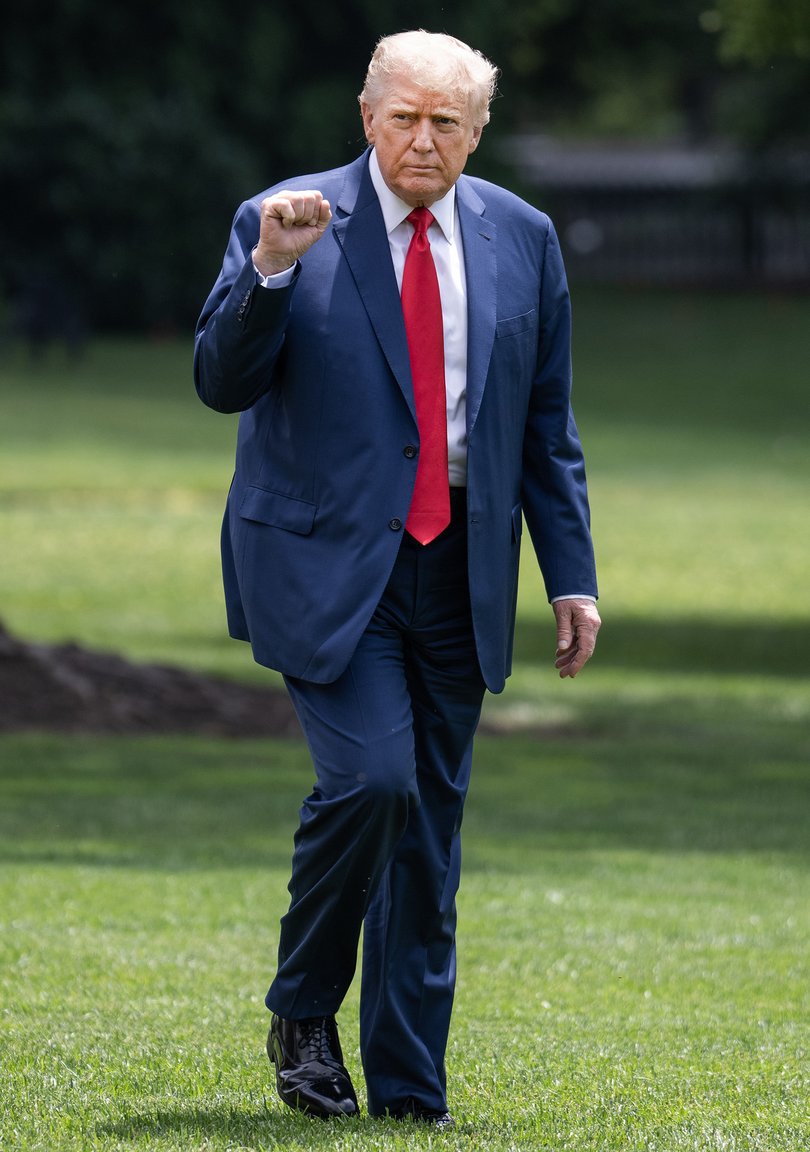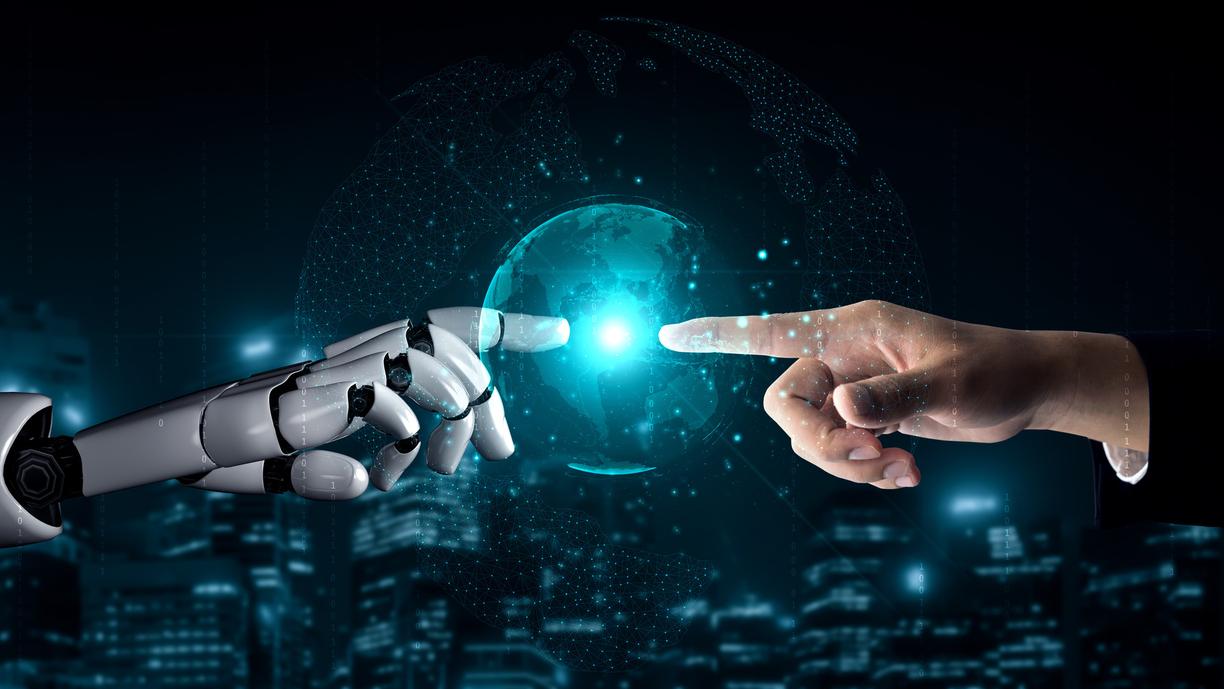Everyone loves a hero and a villain.
It helps make the world less complex.
But scratch the surface and often moments of great change are driven by movements more than their figureheads.
In economics and finance that is particularly the case, where for every Steve Jobs and Elon Musk there are millions of investors and consumers shaping the world.
The world’s most influential entrepreneurs are likely to be those at the forefront of AI but their legacy will not be shaped by their personalities. AI instead will develop its own personality based on the totality of human information fed to it in its training models.
Depending on your scepticism, AI will either be a more sophisticated spreadsheet, or something approaching sentience.
At the extreme, according to former OpenAI researcher Daniel Kokotajlo, within years AI rapidly learns to do any job, even the blue-collar ones. And despite the very obvious consequences for employment, the US and China are forced to continue investing for fear the other has AI that gives it total military advantage.
Whether driven by greed, fear or altruism, or a combination of all, the investment in AI is real and requires trillions in funding. As more and more hyperscalers (large-scale cloud and data-management facilities) are built, AI will require as much energy as Spain in the next two years.
All this investment is coming at a time when the world has never been more indebted.
Ageing populations require increasingly large amounts of government budgets for healthcare and pensions. Cities continue to grow larger, requiring more infrastructure.
The foundations on which postwar prosperity was built are shifting as we enter a new era of geopolitics where nations must invest in self-reliance, both militarily and in energy.
And amid all this a new generation is emerging ascendant for the first time, as boomers fade into the sunset and millennials and gen Z outnumber them at the ballot box.
Economics is not the study of individuals but rather aggregates, and in an era where the most faceless embodiment of human aggregation — AI — is in the ascendancy, these three other influencers are going to shape the world.
The bond vigilante
The world is indebted. Horrendously so, at $US300 trillion or 3.5 times global GDP.
Across governments, households and businesses, there are more IOUs than before the global financial crisis — 26 per cent more as of 2022.
International ratings agency S&P Global called for there to be a “great reset” among policy makers to do something about it, but frankly, no one is listening to the ratings nerds.
However, governments have to answer to bond traders, or “bond vigilantes” as they are increasingly known.
Remember former British PM Liz Truss and her chancellor Kwasi Kwarteng? Their ill-conceived mini-budget, which included £45 billion ($77 million) in unfunded tax cuts in 2022 was so poorly received by the bond market that it nearly crashed the UK’s pension industry.
As bond traders dumped British government bonds in the face of unsustainable debt, the Bank of England had to bail out the pension funds, the pound collapsed against the dollar and interest rates soared. (Bonds and interest rates are inversely related, so falling bond prices push up a bond’s yield, or interest rate.)
Kwarteng’s career was over in just 38 days. Truss hung on, but not as long as the iceberg lettuce The Daily Star pitted against her. Her 44 days as PM was the shortest in British history.
Most punters think the equity market is the barometer of an economy but it’s the $US140 trillion bond market that sits like a Roman emperor over the contest of economic ideas.
Just ask Donald Trump. The master negotiator thought he could outlast China in a game of tariff chicken.
The bond market had other ideas.
Once they realised that the ratcheting of tariffs was going to significantly curtail the US economy, they starting dumping their holdings.

Trump, who had previously ignored his advisers’ advice, as well as the plunging stock market, was forced to take notice of the “yippy” bond market.
“The bond market is very tricky,” he said. “I was watching it.”
A new contest is now brewing in the US, where Trump’s proposed tax cuts are putting it on the path to the same sort of fiscal fisticuffs that took down Truss.
The US Budget is already out of control, with spending growing nearly three times faster than the economy and interest payments on debt outweighing defence spending.
And that is before Trump’s signature tax cuts, that could potentially load the US with an extra $US23.7 trillion in debt. If that “big beautiful Bill”, as Trump calls it, goes through then US debt to GDP would rocket to 200 per cent by 2050, with only Sudan and Japan having a worse debt outlook.
In May, Moody’s was the ratings agency to strip the US of its triple-A credit rating and the bond vigilantes have been saddling up again, pushing long-term interest rates to 5 per cent, the highest they have been since the eve of the global financial crisis.
Once again, Trump’s negotiating skills will be of no use against the faceless efforts of the bond vigilante.
That will make it harder and harder for the US Federal Reserve to cut official interest rates, putting more pressure on consumers and indebted businesses.
Other governments will be taking notice, especially as the global economy fractures and economic risks multiply.
Australia is slowly sleepwalking into higher deficits and higher debt. For now, our debt looks mild at a mere 60 per cent of GDP across Federal and State Governments.
But our economy is heavily reliant on Chinese demand for iron ore and coal to prop up our Budget, and any disruption to that trade will make buyers of Australian government bonds nervous.
The election may have voted for continued spending, but it’s the faceless bond vigilantes who may hold the most influence over Treasurer Jim Chalmers.
The electron
They are invisible, weightless, and travel at near the speed of light. But these tiny particles now power the biggest questions in economics, climate, and security.
And they are in increasing demand.
Last decade, electricity grew at twice the pace of overall energy demand according to the International Energy Agency.
Over the next 10 years, it is expected to grow six times as fast, driven by a growing uptake of artificial intelligence, electric vehicles, microchip production and increasing urban density.
Creating enough electrons, and getting them safely to their destination is going to be one of the great challenges of the next 25 years and is already becoming a source of political division.
At the national level, electrons, and how to produce them, helped blow up the 75-year partnership between the Liberal Party and the Nationals.
At the international level, some commentators believe energy self-sufficiency has allowed Trump to break up the global world order.
That world order, protected by America’s naval might, was about ensuring US access to oil. Now America is a net oil exporter, Trump feels emboldened to go it alone.

Across the globe, countries are increasingly facing an existential energy threat.
“Energy security is national security,” said British Prime Minister Keir Starmer in April at a UK energy summit attended by world leaders.
That is why energy investment is set to explode, exceeding $US3 trillion in 2024 according to the IEA, of which $US2t will go to clean-energy technologies and infrastructure.
But while money is being thrown at renewable generation, particularly in Europe, not enough is being invested in the grid, a potential factor behind the widespread blackout that took down Spain and Portugal. (At the time of writing, the Spanish Government was still investigating the root cause of the blackout).
Now that Europe can’t trust Russia as a supplier of natural gas, it is increasingly looking at nuclear energy as an alternative.
Renewables-rich Denmark is considering lifting its ban on nuclear power, Spain is pausing its plan to mothball its plants, while France, the UK and Belgium are looking at extending the life of their nuclear power stations.
All told, Bloomberg suggests there will be need to $250 billion invested annually in nuclear over the next 25 years to meet the demand for nuclear power.
The demand for locally sourced, emissions-free electrons is so great that governments seem willing to cop the sticker shock of new nuclear build.
The UK’s Hinkley Point reactor has seen its construction time blow out and the cost skyrocket to £48 billion. The United States has seen similar challenges, with a plant being built by Westinghouse running seven years late and 100 per cent over budget.
That seems no impediment to new build, with France intending to build another six nuclear plants and the US 13.
But that is dwarfed by China which has 36 new reactors in the planning stage and another 158 in the proposal stage.
It all has to do with ensuring stability, not just from an industrial sense, but from a geopolitical one.
But all that investment will require government support, driving larger budget deficits, not just for the infrastructure itself, but for the billions in energy rebates to soothe consumer anger over rising prices. All under the watchful eye of the bond vigilantes.
Australia is expected to continue relying on its fossil-fuel-based exporters in the near term, shipping coal and gas to Asia, which will be 90 per cent dependent on oil and 60 per cent on gas imports by 2050, according to the IEA.
Clean energy will continue to be demanded by the increasingly powerful youth vote, who will put more pressure on governments to come up with a solution to net-zero emissions, even as they demand more the artificial intelligence that will drain the grid.
Unlike the personalities dominating global headlines, the electron doesn’t speak. But it is shaping elections, rewriting alliances, and redrawing the map of the global economy. As the world scrambles to secure enough of them, this invisible particle may turn out to be the most powerful influencer of all.
The millennial/gen Z
If the election taught us anything, it’s that the age of the boomer is over.
The bulging population bubble born in the post-World War II era, that drove the social movements of the 1960s and continued to prop up conservative governments into to 2000s, has finally rolled over for the youth vote.
For the first time gen Z and millennial voters outnumbered boomers and their message was clear.
Out with the dog-whistle over wokeism and DEI, the climate denialism and the picking on subsets of society such as public servants.
Failure to understand the mindset of millennials undid the Coalition.
Kos Samaras, the former Labor strategist who now runs Redbridge Group, said the LNP’s polling was way off on youth voter intentions, and a key reason it performed so badly at the ballot.
Remove baby boomers from the election result in metropolitan Melbourne and Sydney and the Liberal primary vote would be just 17 per cent and 21 per cent respectively, Redbridge reveals.
But while the Coalition might have completely misread the cohort, Samaras says there’s no guarantee Labor has a lock on them.
“It’s an incredibly fragmented constituency when it comes to voting behaviour,” Samaras says.
“Labor needs to treat them as an extremely volatile constituency that can preference their opponent after voting for minor parties, just like they preferenced Labor on this occasion, delivering 90-plus seats to the same primary vote that Labor got in 2016.”
While Labor and the Greens (including in the outer suburbs) hold a natural affinity with millennials and gen Z, Samaras says the cohort has clear needs and wants.
On progressive issues, both young men and women are aligned.
Suggest climate change is a hoax, or challenge them on LGBTQI issues and “young people look at you like you’re a f...ing weirdo”, Samaras says. “These are not topics to be debated, and if you do, to them you come across as literally mad.”
Economic security is increasingly important, however.
Research by National Australia Bank’s behavioural economics unit has found that 60 per cent of people under 29 and 56 per cent of people aged 30-49 believe they will have to work longer to retire comfortably. That cohort also is experiencing the highest levels of financial stress in the country, and tend to hold more personal debt such as payday loans, credit card debt and buy-now, pay-later finance.
“They think the system is stacked against them, contributing to a lower quality of life than their parents and grandparents, and housing is the epicentre of that,” Samaras says.
The level of debt held by younger people has made them more sanguine about government spending, which explains why the Coalition’s “better economic manager” attack fell flat.
Young people benefited from government largesse during COVID and feel big spending can be justified.
“Younger Australians’ view is, (government debt) doesn’t really worry me because I’m in debt myself and I don’t think I’ll live a life without debt,” Samaras says, while warning that Victoria’s youth have a different view because they see service cuts coming as that State tries to repair its budget.
For conservatives there is room to win young voters back over on economic issues, as long as they get with the program on progressive issues.
They think the system is stacked against them, contributing to a lower quality of life than their parents and grandparents, and housing is the epicentre of that.
Unlike other countries, which had seen a rise in right-wing support in the US and Europe, particularly in young men, Australia had not experienced a similar shift.
Samaras puts that down to more economic opportunity in Australia, and a better social safety net.
Our ability to control borders also helps. Whereas the flood of migrants into Europe or the southern US States has raised concerns about safety and wages being undercut, Australia hasn’t seen such an occurrence.
“I think where the conservatives in this country misread the play is they just think, ‘immigration is being rejected in the US, therefore it’s the same here’. It’s not the same experience,” Samaras says.
Samaras says young men do worry about immigration inasmuch as it puts pressure on the housing market, but they certainly don’t advocate for deportation.
But economic insecurity may be an increasing motivating factor if job prospects start to shift.
Entry-level jobs, in law, technology and other fields are being increasingly done by artificial intelligence. LinkedIn’s chief economic opportunity officer, writing in The New York Times, worries that AI is “breaking the bottom rung of the career ladder”, taking away the entry-level jobs that are the first steps of a young person’s career, pointing to a survey of 500,000 professionals by LinkedIn that found gen Z are the most pessimistic about their future.
It’s a generation coming into its own voice but doing it away from the traditional media consumed by the generations above, meaning its views are more difficult to measure.
In terms of influence, though, this cohort is just getting started.

